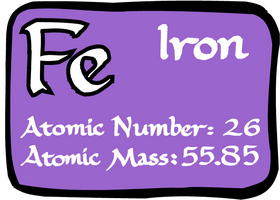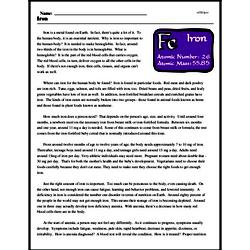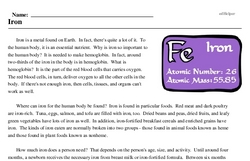Iron
Iron is a metal found on Earth. In fact, there's quite a lot of it. To the human body, it is an essential nutrient. Why is iron so important to the human body? It is needed to make hemoglobin. In fact, around two-thirds of the iron in the body is in hemoglobin. What is hemoglobin? It is the part of the red blood cells that carries oxygen. The red blood cells, in turn, deliver oxygen to all the other cells in the body. If there's not enough iron, then cells, tissues, and organs can't work as well.
Where can iron for the human body be found? Iron is found in particular foods. Red meat and dark poultry are iron-rich. Tuna, eggs, salmon, and tofu are filled with iron, too. Dried beans and peas, dried fruits, and leafy green vegetables have lots of iron as well. In addition, iron-fortified breakfast cereals and enriched grains have iron. The kinds of iron eaten are normally broken into two groups - those found in animal foods known as heme and those found in plant foods known as nonheme.
How much iron does a person need? That depends on the person's age, size, and activity. Until around four months, a newborn receives the necessary iron from breast milk or iron-fortified formula. Between six months and one year, around 11 mg a day is needed. Some of this continues to come from breast milk or formula; the rest comes from the iron-fortified baby cereal that is normally introduced around this time.




